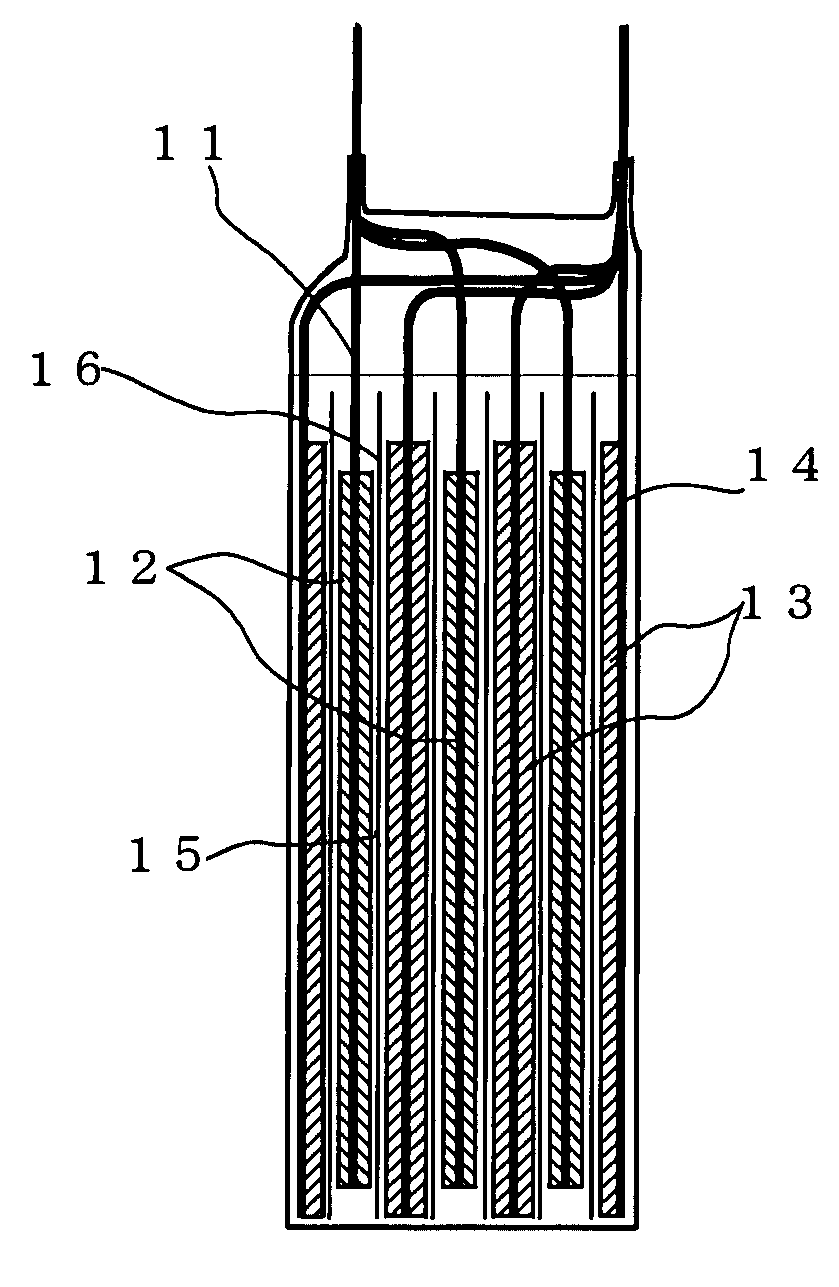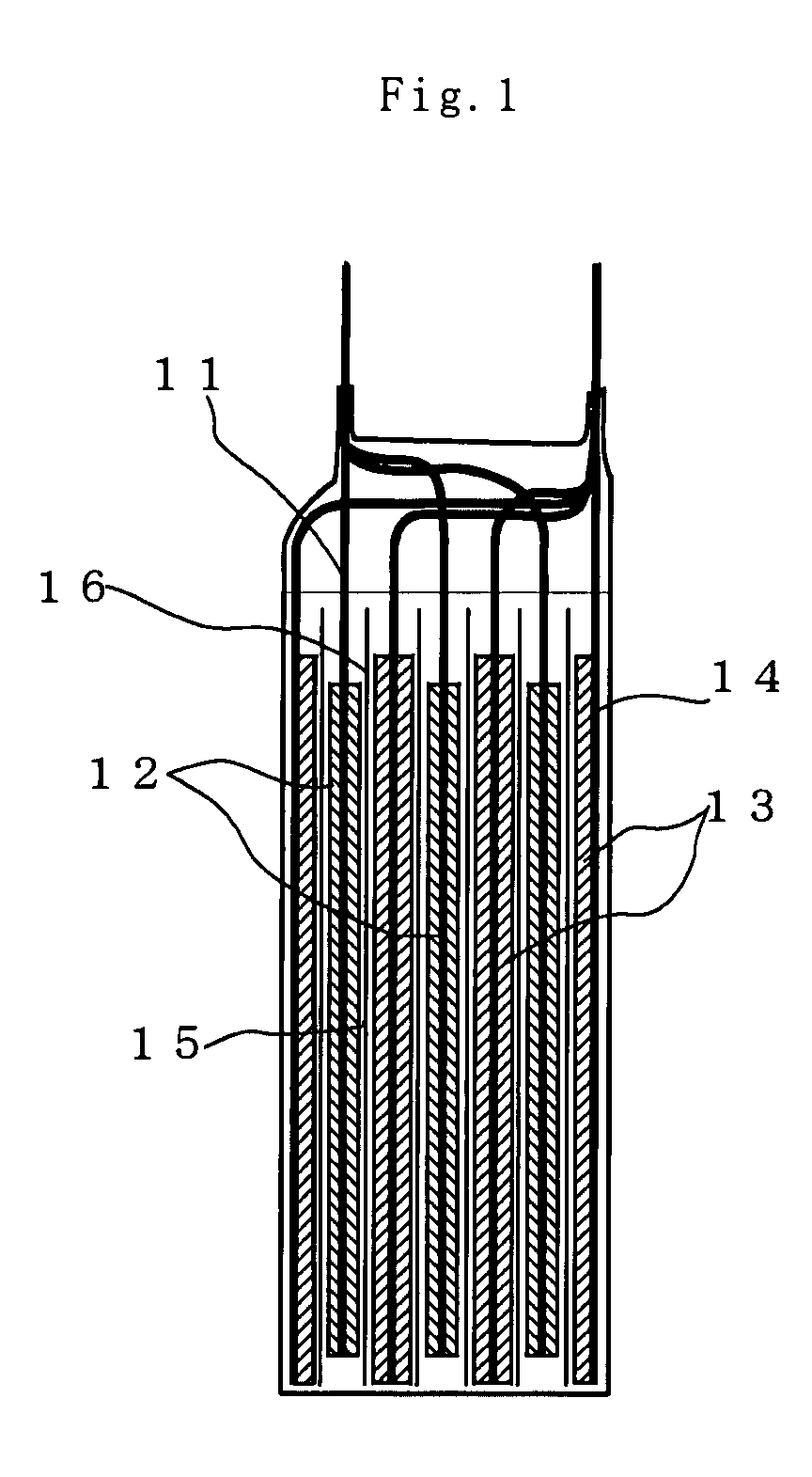Lithium ion secondary battery
a secondary battery and lithium ion technology, applied in secondary cell details, non-aqueous electrolyte cells, cell components, etc., can solve the problems of reducing the negative electrode capacity, reducing the active material ratio, and incurring side effects, so as to improve the energy density of the battery and reduce the weight
- Summary
- Abstract
- Description
- Claims
- Application Information
AI Technical Summary
Benefits of technology
Problems solved by technology
Method used
Image
Examples
examples
[0037]Preparation of the Positive Electrode
[0038]The positive electrode active material and electrical conducting material were mixed together, and the mixture was uniformly dispersed in N-methyl-2-pyrrolidone (NMP) having a binder dissolved in it to make a slurry. For the positive active material LiMn2O4 was used; for the electrical conducting material carbon black was used; and for the binder polyvinylidene fluoride (PVdF) was used. After hat slurry was coated on a 25 μm-thick aluminum foil as the collector, NMP was evaporated off to form a positive electrode layer. The solid matter ratio of the positive electrode layer was set at positive electrode active material:electrical conducting material:binder=80:10:10 (% by mass)
[0039]Preparation of the Negative Electrode
[0040]In each of Examples 1-11 and Comparative Examples 1-10, the carbon material having an average particle diameter median size), ratio of particles of less than 3 μm and a moisture absorption set out in Table 1 and th...
PUM
 Login to View More
Login to View More Abstract
Description
Claims
Application Information
 Login to View More
Login to View More - R&D
- Intellectual Property
- Life Sciences
- Materials
- Tech Scout
- Unparalleled Data Quality
- Higher Quality Content
- 60% Fewer Hallucinations
Browse by: Latest US Patents, China's latest patents, Technical Efficacy Thesaurus, Application Domain, Technology Topic, Popular Technical Reports.
© 2025 PatSnap. All rights reserved.Legal|Privacy policy|Modern Slavery Act Transparency Statement|Sitemap|About US| Contact US: help@patsnap.com


